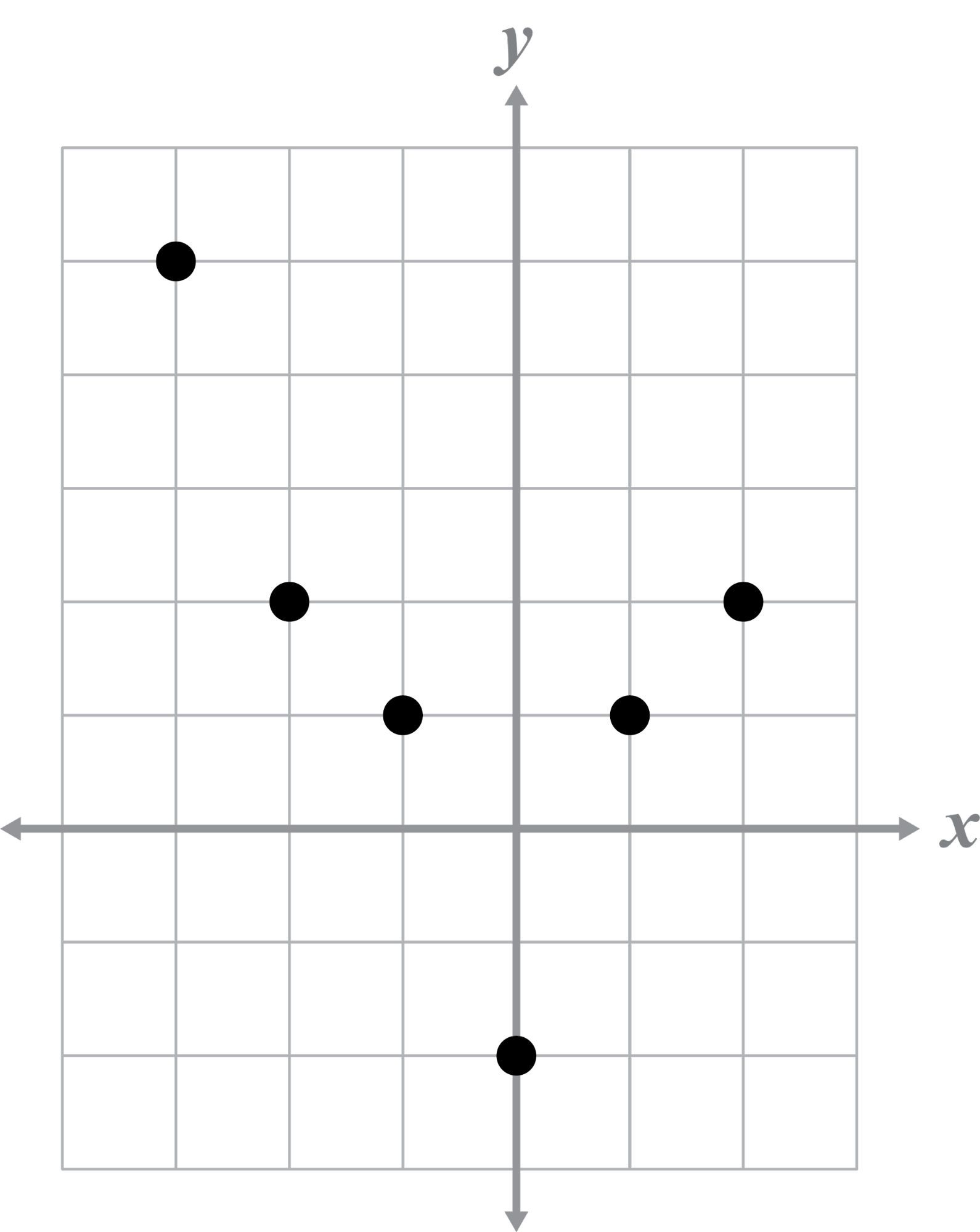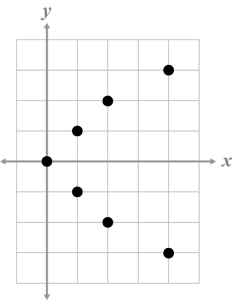Practice Solutions
Name the domain and range. Determine if the relation represents a function.
-
x y –2 5 –1 2 0 1 1 2 2 5
Domain: {–2, –1, 0, 1, 2}
Range: {1, 2, 5}
This is a function because the domain does not repeat.
-
x y –3 13 0 4 1 5 2 9
Domain: {–3, 0, 1, 2}
Range: {4, 5, 9, 13}
This is a function because the domain does not repeat.
- {(2, –1), (4, –3), (2, –2), (8, –5), (6, –4)}
Domain: {2, 4, 6, 8}
Range: { –5, –4, –3, –2, –1}
This is not a function because 2 repeats.
- {(–5, 7), (3, 7), (–1, 3), (7, –5)}
Domain: {–5, –1, 3, 7}
Range: {–5, 3, 7}
This is a function because the domain does not repeat.
Name the domain and range. Determine if the relation represents a function.
Domain: {–3, –2, –1, 0, 1, 2}
Range: {–2, 1, 2, 5}
This is a function because the domain does not repeat. (Or: The graph passes the VLT).
Domain: {0, 1, 2, 4}
Range: {–3, –2, –1, 0, 1, 2, 3}
This is not a function because the domain values repeat. (Or: The graph fails the VLT).
- {(–4, 1), (–1, 2), (5, 8), (8, 11)}
Domain: {–4, –1, 5, 8}
Range: {1, 2, 8, 11}
This is a function because the domain values do not repeat.
- {(3, –1), (4, –1), (5, –1), (6, –1)}
Domain: {3, 4, 5, 6}
Range: {–1}
This is a function because the domain values do not repeat.


